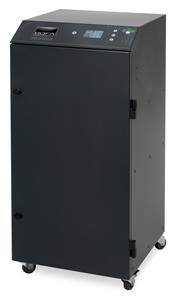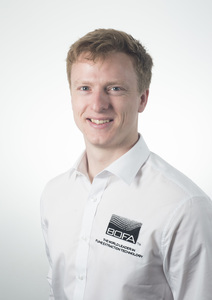

|
Edward Lowton
Editor |


|
| Home> | Health, Safety & Welfare | >Breathing safely | >Breathe easy by specifying effective process filtration |
Breathe easy by specifying effective process filtration
15 April 2024
It's key for health and safety managers to evaluate the most effective means of extraction to help ensure both operator safety and optimal productivity, says Joshua Evans

MANY PROCESS-BASED operations produce potentially harmful airborne emissions. These need to be filtered to maintain a healthy working environment for operatives - and to keep equipment free from dust to avoid unplanned downtime.
This is a challenge faced by managers with a legal duty under applicable health and safety regulations to implement workplace practices that remove risk or make provision for local exhaust ventilation to filter fume and dust, particularly where hazardous materials are being worked.
Ensuring regulatory compliance
In terms of compliance in the UK, manufacturers need to be mindful of the Health and Safety at Work Act 1974, which requires employers to provide and maintain working conditions that are safe and without risk to the health of employees, so far as is reasonably practicable. COSHH (Control of Substances Hazardous to Health) regulations, along with the EH40 workplace exposure limits, govern the levels for potentially harmful airborne contaminants, while guidance from HSG258 sets the benchmark for controlling airborne contaminants in the workplace.
In industrial settings, these emissions can emanate from a wide range of processes, whether generated via laser batch marking or ink jet coding onto food and pharmaceuticals packaging, traditional ink printing, automated PCB soldering or additive manufacturing/3D printing.
All these processes can create risk if contaminants enter the breathing zones of operatives, which is why companies invest in filtration systems, such as those developed by BOFA, to help to maintain a clean, healthy working environment. At the same time, these extraction systems also have a role to play in keeping high value equipment free from process-generated particles that can impact adversely on product quality and even cause unscheduled downtime.
Keeping industry moving
Visit a drinks canning line and you’ll likely see laser technology working at speeds up to 1,000 codes per minute. It’s a process critical to maintaining production schedules…and it relies on fume and dust extraction technology filtering the airborne contaminants that could otherwise impact negatively on both mark quality and the workplace environment.
In additive manufacturing, which is undergoing exponential growth, studies confirm the presence of fumes and particulate generated by 3D print process. Extraction technology can help filter the gases (VOCs), particles and nanoparticles which have the potential to be harmful to human health. These emissions are invisible to the eye but still need to be controlled.
Selecting the right tool for the job
As such, it can seem daunting for managers to select the most appropriate filtration technology for their operations. This means working closely with original equipment manufacturers, alongside BOFA, to understand the size and chemical profile of emissions. This process includes precise airflow analysis as a precursor to the design of filtration system architecture and control systems.
The key decision for health and safety managers is to evaluate the most effective means of extraction to help ensure both operator safety and optimal productivity. Extraction options include captor hoods, receptor hoods, partial and full enclosures - BOFA engineers can provide guidance on the most suitable solution.
Alongside filtration architecture, companies also need to take system control into account. For example, BOFA’s iQ operating platform features a host of functions and innovations, including onboard data logs and real-time system condition visualisation so operators can monitor whole system performance and schedule adherence in real time. This also helps ensure that essential maintenance regimes, such as filter exchanges, are undertaken in step with production cycles…and thereby avoid dreaded unplanned downtime.
Joshua Evans is an applications engineer and head of BOFA Academy
For more information:
Tel: +44 (0) 1202 699 444
- FIA & Western Business Media sign strategic agreement
- World demand for food processing machinery expected to rise to $73bn in 2019
- Industrial software applications spend to soar
- Esh-Stantec and Hauff-Technik collaborate to improve sealing solutions in UK water sector
- Made in Britain launches new UnPacked series, showcasing the innovators shaping UK manufacturing
- Entries open for 2022 Hire Awards
- Space weather forecasts to protect power grid from solar storms
- Good Practice Guide for safe use of dumpers
- Security challenges for manufacturers
- Hubs launches Online Engineering Summit series



















